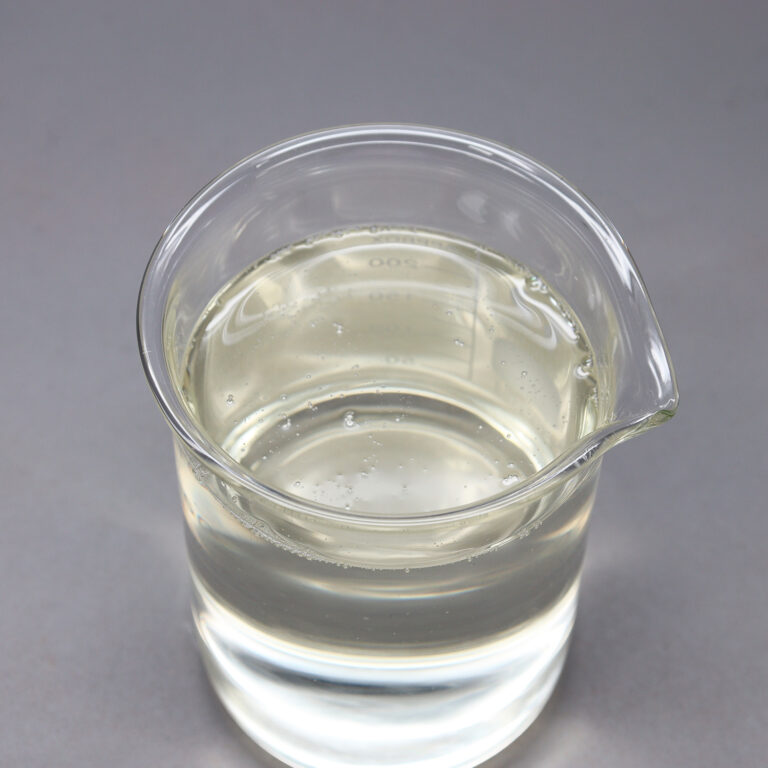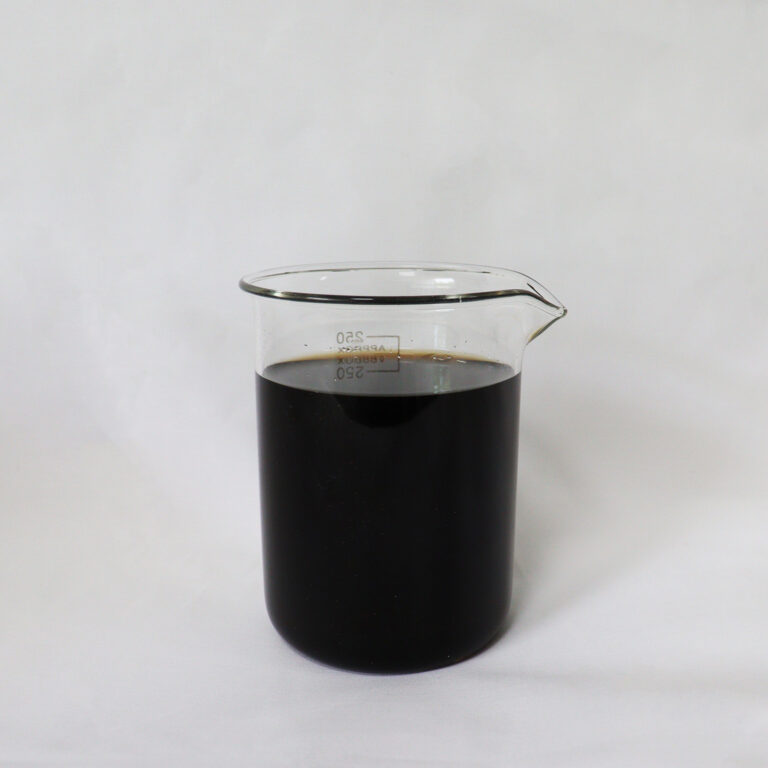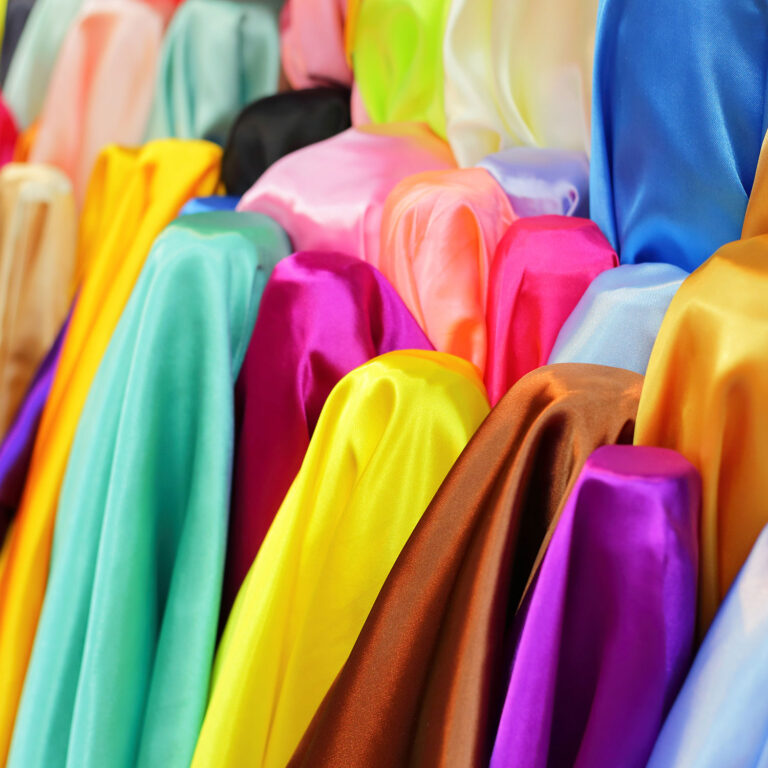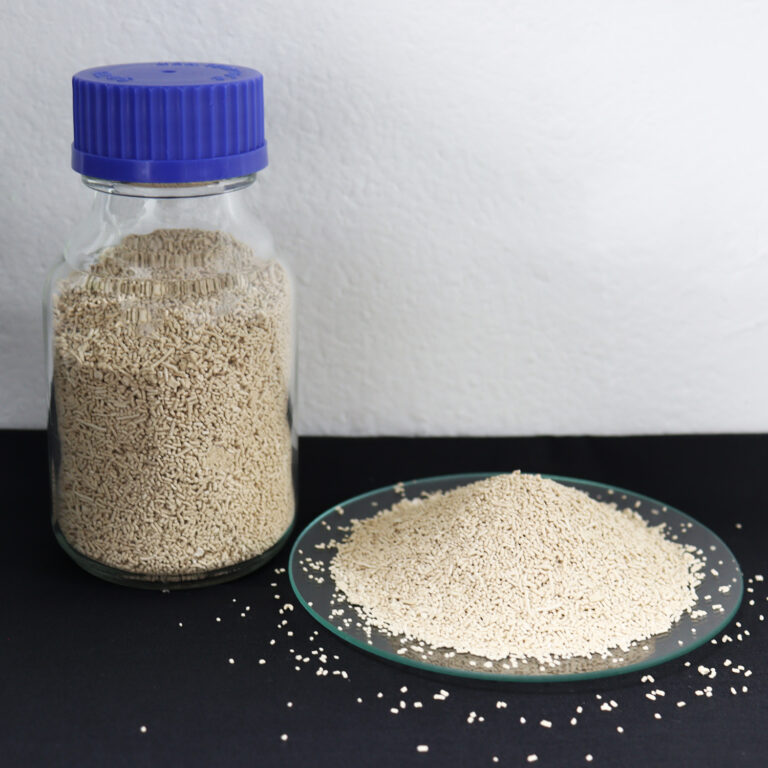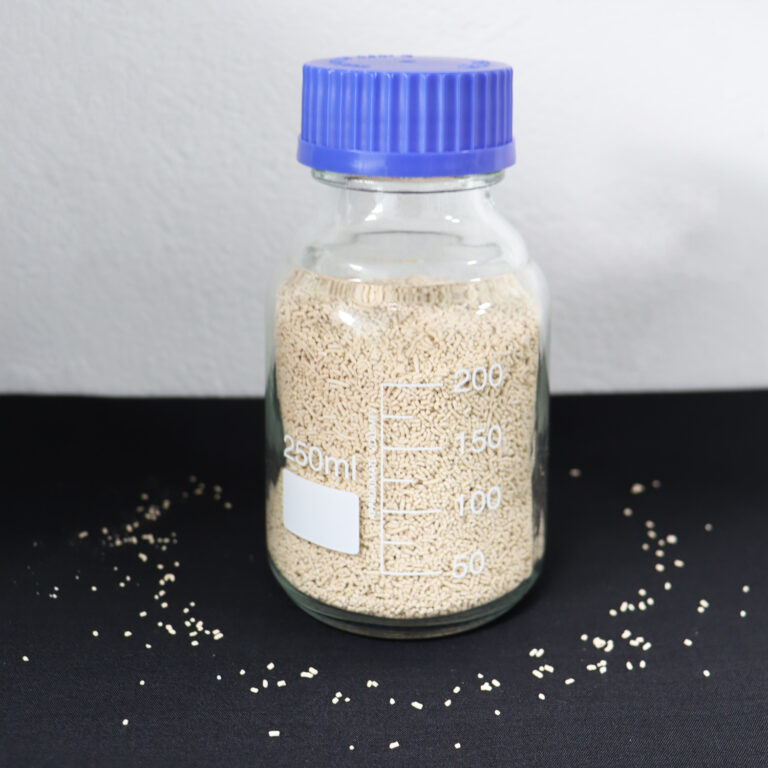In the competitive world of fashion and textile manufacturing, “hand feel” isn’t just a detail—it’s a dealbreaker. Whether a fabric feels silky, smooth, bouncy, or soft to the touch can influence consumer purchase decisions and brand perception. One increasingly popular solution for optimizing fabric hand feel is the use of fabric softener flakes in garment finishing.
But what exactly are fabric softener flakes, and how do they improve tactile quality in garments? Let’s explore their role, benefits, and application methods in modern textile processing.
What Are Fabric Softener Flakes?
Fabric softener flakes are a solid-form textile softening agent, often derived from fatty acid esters, quaternary ammonium compounds, or modified silicones. Unlike liquid softeners, flakes are typically melted and diluted into emulsions before being applied to fabrics.
They are commonly used in:
- Garment dyeing and finishing
- Washing after treatments like stonewash, acid wash, or enzyme wash
- Denim and knitwear production
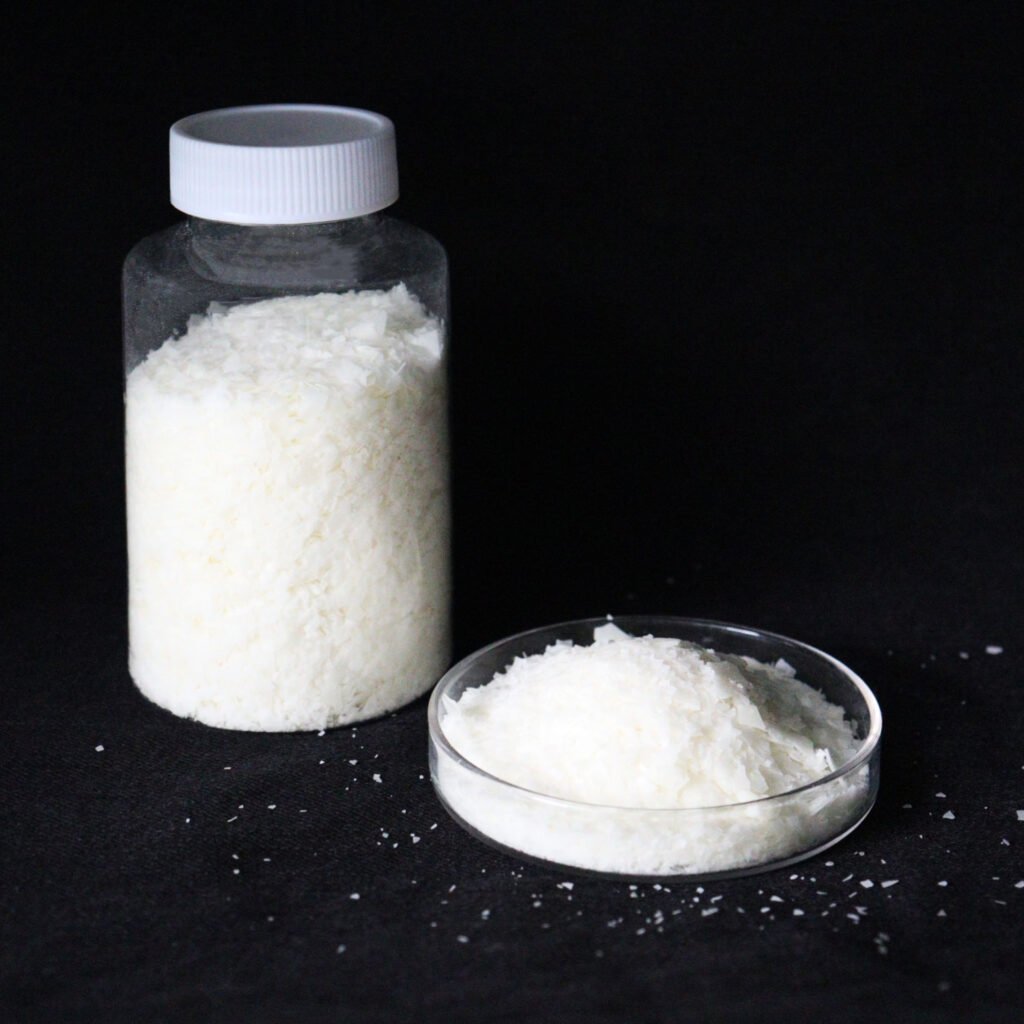

How Do Fabric Softener Flakes Work?
Once dissolved and applied to garments, these flakes coat the surface fibers with a thin lubricating layer. This reduces surface friction, enhances smoothness, and gives the fabric a softer, fuller, or drier touch, depending on the flake formulation.
Key Functions:
- Softening rough or abrasive fabric textures
- Improving drape and fluidity
- Reducing static cling (especially in synthetic blends)
- Minimizing fiber-to-fiber friction for improved wearability
Benefits of Using Fabric Softener Flakes in Garment Finishing
✅ 1. Enhanced Hand Feel Across Fabrics
Flakes can deliver a custom hand feel—from buttery soft to paper-dry—depending on your target market and garment type. They’re especially useful for:
- Cotton and cotton-blend knits
- Washed denim and jeans
- Polyester/cotton blends
- Towels and terry fabrics
✅ 2. High Concentration, Lower Cost
Because flakes are in solid form, they often contain less water and more active content than liquid softeners. This translates to:
- Lower transportation costs
- Smaller storage footprint
- Higher value per kg
✅ 3. Flexible Formulation & Application
Flakes can be used to create emulsions in-house, allowing brands or processors to control softness level, pH, and other properties. They’re suitable for use in:
- Padding
- Exhaust finishing
- Garment washing machines
✅ 4. Good Compatibility with Other Chemicals
Fabric softener flakes can be combined with resin finishes, enzyme treatments, or fragrance agents, making them ideal for multifunctional garment finishing lines.
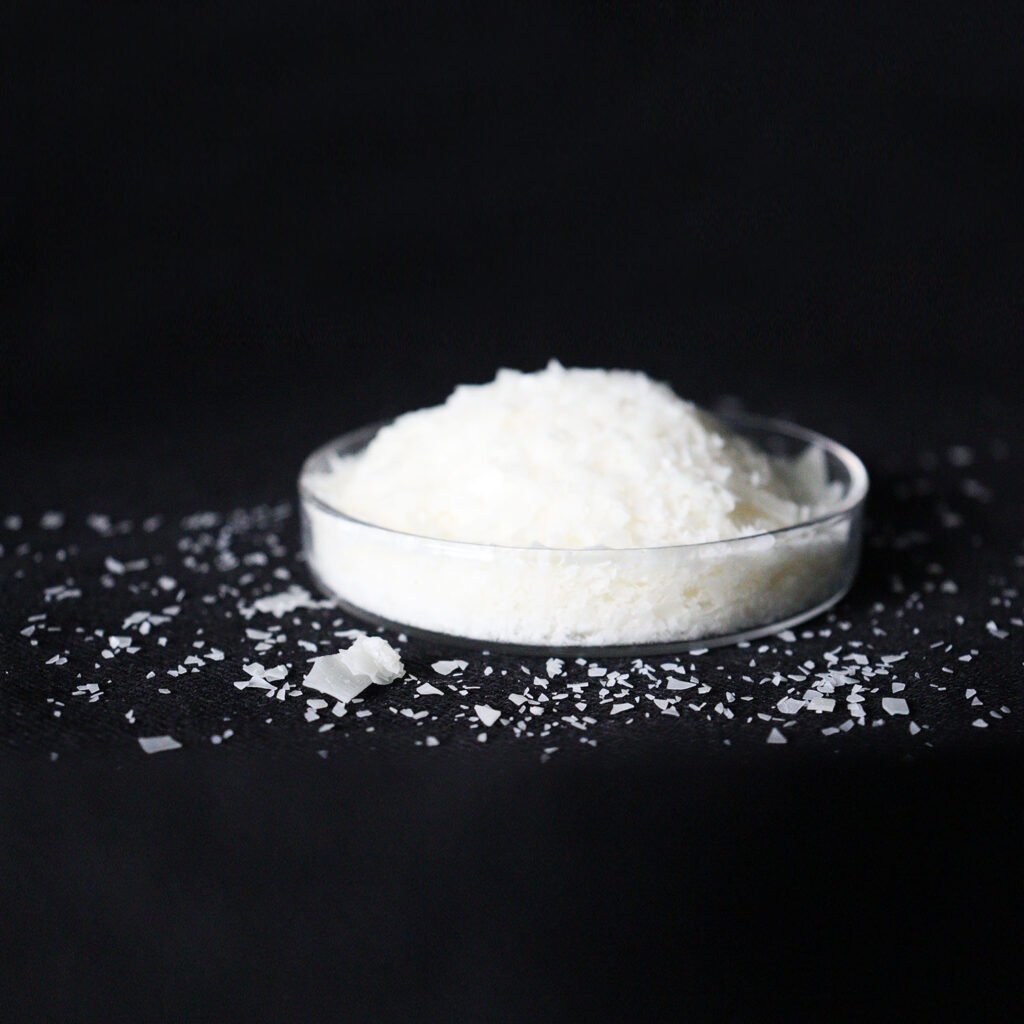

How to Apply Fabric Softener Flakes
Step-by-Step Guide:
- Dissolve the flakes in hot water (~60–80°C) to form a stable emulsion.
- Dilute the emulsion to the required working concentration (usually 2–5% owf).
- Apply using exhaust (for garments) or padding (for fabric rolls) depending on your setup.
- Dry and cure as required. Typically, drying at 100–130°C is sufficient.
💡 Always perform pre-tests to determine compatibility with dyed garments and other finish agents.
Eco-Friendly Options Available
Many modern fabric softener flakes are formaldehyde-free, APEO-free, and biodegradable, aligning with OEKO-TEX®, GOTS, and REACH standards. This makes them suitable for use in sustainable fashion production.
Work with a Reliable Softener Flake Supplier
To get consistent quality and application support, it’s essential to partner with an experienced textile chemical supplier in China. At Meixin Biotech Co., Ltd., we offer:
- High-concentration fabric softener flakes
- Tailor-made formulations for various garment types
- Technical data sheets and application support
- Eco-friendly and sustainable finishing solutions
Want to test samples or customize a softener for your garments?
Email: connie.huang@meixinbiotech.com
Softening Auxiliaries Articles
How Fabric Softener Flakes Improve Hand Feel in Garment Finishing
Silicone Softener Beads vs. Emulsions: Pros and Cons for Textile Finishing
Softergent Flakes vs. Liquid Softeners: Which Should You Use?
Top 5 Applications of Silicone-Based Softeners in Modern Textile Processing
How Silicone Softening Beads Improve Fabric Feel and Process Efficiency
Silicone Fabric Softener vs. Traditional Softeners: Which Is Better?
What Is a Silicone Softener for Textiles? Benefits, Types & Applications
Understanding Fabric Softener Flakes: Types, Usage & Key Advantages
Does Silicone Softener Affect Color Fastness? Application Tips for Garment Dyeing
How to Apply Silicone Fabric Softeners in Dyeing & Finishing Processes
Where to Buy High-Quality Silicone Softener for Textiles (2025 Guide)
How to Choose the Right Silicone Fabric Softener for Cotton, Polyester & Blends
Top Exporters & Manufacturers of Silicone Softening Beads in China
Understanding Fabric Softener Flakes and Their Role in Textile Care
Is Bead-Type Softener Suitable for Export? 5 Key Questions + Packaging, Storage & Transport Tips
5 Key Questions to Ask Before Buying Silicone Softeners for Garment Production
How High-Concentration Softeners Help Garment Factories Reduce Production Costs
Bead vs. Liquid Silicone Softeners: Which Is Better for Mass Fabric Processing?
Eco-Friendly Silicone Fabric Softeners: Are They Worth the Switch?
FAQs About Silicone Softener for Textiles: Everything Importers Need to Know


